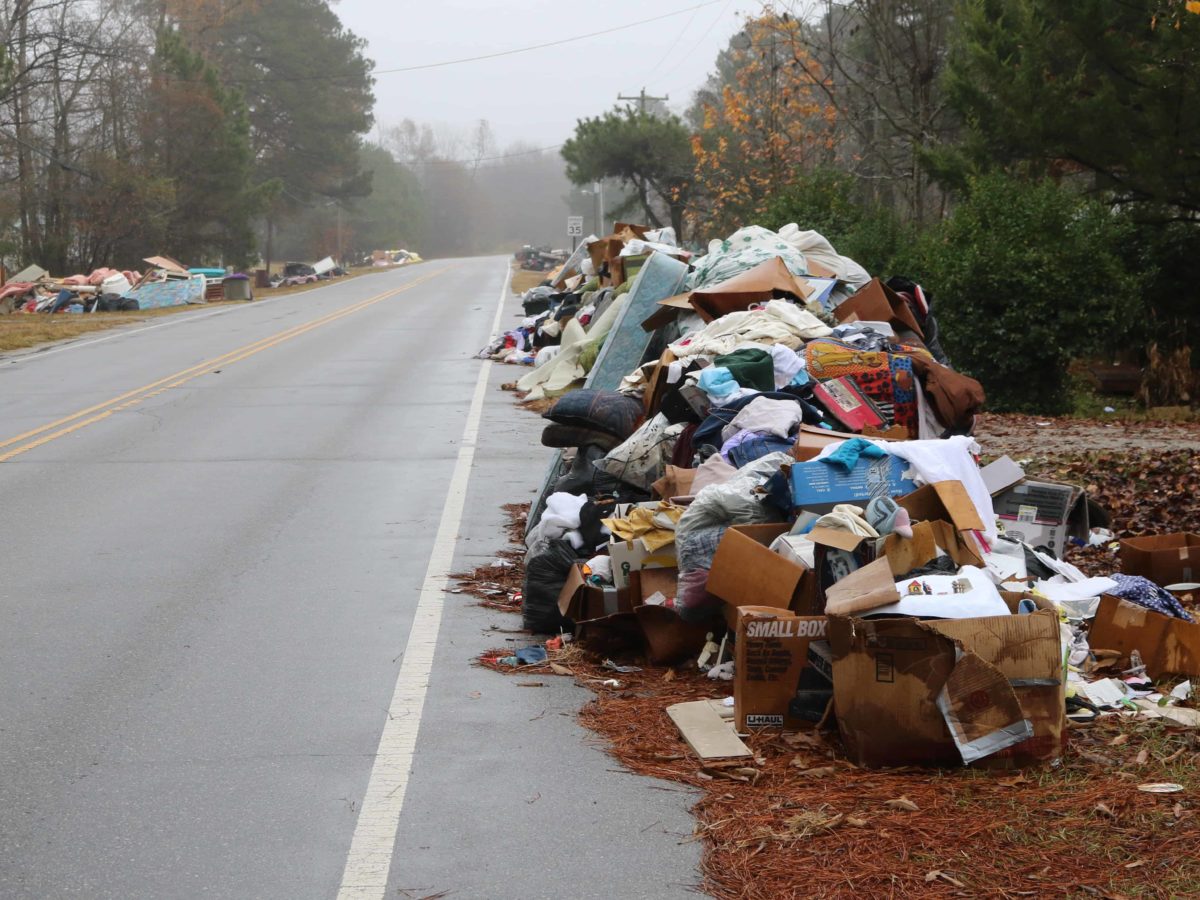
By some accounts, it was Machiavelli who first offered the advice, “Never waste the opportunity offered by a good crisis.” Winston Churchill sometimes gets credited, without clear evidence, with a punchier version: “Never let a good crisis go to waste.”
Whoever originated it, the often-repeated remark comes to mind as the General Assembly prepares to convene for a special session to deal with rural-community crises generated by Hurricane Matthew this year. Congress has approved around $300 million in recovery assistance, and now it’s up to Gov. Pat McCrory and legislators to determine how much the state will devote to assist people and communities recover from the post-hurricane flooding over a wide swath of Eastern North Carolina.
To be realistic, an out-going governor and an out-going legislature can only do so much in a late-year short session. The in-coming governor, Roy Cooper, and the in-coming 2017 legislature will inherit further issues arising from the recent flooding in the East and forest fires in the West.
The state faces not only the immediate flood-and-fire crises but also the long-running “crises’’ facing rural communities. A pair of Census findings suggests the scope of the challenge: The state’s top 10 cities captured half of North Carolina’s population growth between 2010 and 2015. In the same period, 47 out of the state’s 100 counties had net out-migration; that is, more people moved out than moved in. (See Rebecca Tippett’s reports at http://demography.cpc.unc.edu/blog/.)
Aside from wind, water, and fire, powerful forces of demography, globalization, and technology have buffeted many of the state’s rural towns and counties. The Great Recession dealt a blow to already-fragile communities. Some places, situated along four-lane highways or near assets of nature, may prove resilient. Still, when so much manufacturing and warehousing has become automated, even a successfully aggressive business recruitment strategy may not produce enough jobs to distribute throughout distressed rural communities.
Over the past two decades, in my work at UNC-Chapel Hill and at MDC, the Durham-based research organization, I have engaged in efforts to grapple with the daunting issues of rural America. I served on the steering committee of the 1999-2000 Rural Prosperity Task Force, chaired by Erskine Bowles. I took part in a 2004 study of rural high schools — and wrote the report — for the Southern Governors’ Association. The UNC Program on Public Life collaborated in 2009 with the Eastern Region economic partnership to examine the prospects of attracting and retaining young professionals as future leaders.
I mention these projects as backdrop to introduce these three points: 1) North Carolina needs a re-thinking of its economic development strategy and tactics, 2) the state should think more in terms of bolstering regional hubs — such as Greenville and Asheville — and connect rural people to their job growth, and 3) in some places, the best the state can do perhaps is to manage decline to minimize human hurt.
All of this is easier said than done. But central and essential to any agenda is the state sustaining a strong effort to enhance public education. Based on the 70 face-to-face interviews that the UNC Program on Public Life staff and graduate students conducted with young professionals in Eastern North Carolina, we came to the conclusion that they considered robust public education as the “ultimate amenity’’ necessary to retain them and their families in the region.
That’s why we hear Edgecombe County Public Schools Superintendent John Farrelly talking about his need to saturate the community with possibility.
To be sure, a strong education inevitably will result in many young people moving away…and then maybe moving back. Education gives them greater capacity for work, for civic participation, for upward mobility.
That Southern Governors’ Association report of a decade ago spoke of the “power of a state vision’’ in improving schools. Indeed, state government cannot ignore the immediate crises facing neighborhoods, businesses, and schools damaged by flood and fire — nor should the state flinch and “waste the opportunity’’ that looms in 2017 and beyond.


